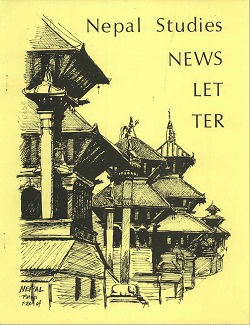Author Biography
Dominique Townsend has a Masters from Harvard Divinity School and a PhD from Columbia University. Her research focuses on material culture, cosmopolitanism, and the place of aesthetics and the senses in Buddhism, particularly in Tibet. Dominique is Assistant Director of Interpretation & Engagement at the Rubin Museum of Art in New York City.
Abstract
By analyzing the writings of select Tibetan authors of the seventeenth and eighteenth centuries, this article reflects on the prestige attached to secular (but not anti-religious) knowledge, and the ambivalence prominent thinkers expressed around the proper relationship between worldly and religious learning. Tibetan lay and religious leaders have long been steeped in a classical Indic system of categorizing knowledge, known in Sanskrit as pañcavidyāsthāna and in Tibetan as rikné nga (Tib. rig gnas lnga). Sakya Paṇḍita first established the importance of these fields of knowledge in Tibet during the thirteenth century. Later intellectual figures such as the Fifth Dalai Lama Ngawang Lozang Gyatso and his cohort, including figures associated with the influential Nyingma monastery called Mindroling (Smin grol gling), all acknowledged the significance of rikné even as they struggled to balance their worldly interests with religious concerns. Their writing shows that worldly subjects, distinct from but in combination with the study of religion, have been important in shaping Tibetan thinking and social life for many centuries. Worldly knowledge was and is a basis for political and cultural prestige in Tibetan society as well as a common ground for connecting with the ruling classes of neighboring civilizations, also shaped in part by Buddhism. Over the centuries, the inculcation of rikné among educated Tibetans contributed to the development of a connoisseur class. Further, the Tibetan socio-political theory of the union of religion and the secular (chos srid zung ’brel) and the closely related ‘two traditions’ (lugs gnyis) model, were primary concerns of the Fifth Dalai Lama and his colleagues. These theories articulated an ideal union between worldly and religious power. Precisely how Tibetan literati have understood and valued worldly fields of learning in relation to religious subjects has varied across time, place, and religious tradition. Investigating particular Tibetan statements on the significance of rikné reveals the strong, if notably ambivalent, presence of secular values in Tibetan history and culture.
Acknowledgements
This article is rooted in research conducted for my dissertation, “Materials of Buddhist Culture: Aesthetics and Cosmopolitanism in Early Modern Tibet” a project made possible by the help of countless scholars, teachers, and friends. The perspective I present in this particular article, and any mistakes it contains, are solely my responsibility. I would like to offer a special note of thanks to Pema Bhum for his generosity and patience discussing Tibetan language sources with me. I am also grateful to Gray Tuttle and Annabella Pitkin for commenting on early drafts. And finally, my sincere thanks to Holly Gayley and Nicole Willock for their significant commitment to this volume and my article.
Creative Commons License

This work is licensed under a Creative Commons Attribution 4.0 License.
Recommended Citation
Townsend, Dominique. 2016. Buddhism's Worldly Other: Secular Subjects of Tibetan Learning. HIMALAYA 36(1).
Available at:
https://digitalcommons.macalester.edu/himalaya/vol36/iss1/15


